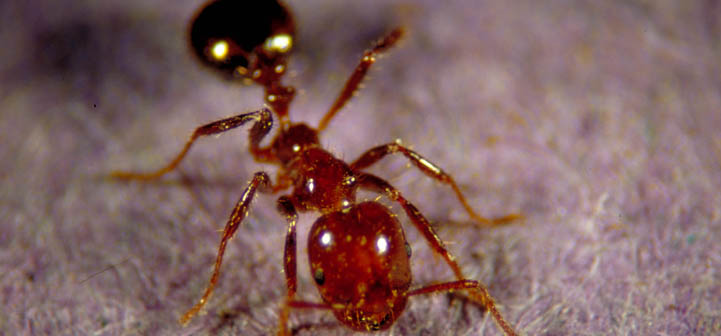Organic Insecticides
Several products said to be “organic” (of natural origin) are currently marketed for fire ant control. These products may or may not be registered as pesticides by the EPA and the appropriate state regulatory agency. In 1996 the EPA established that certain ingredients that pose minimum risk to users no longer require EPA approval to be marketed as insecticides. These products are called “25 b” products, referring to that clause in FIFRA, the Federal Insecticide, Fungicide and Rodenticide Act). Some of the “organic” products fall into the minimal risk category. Therefore, not every product sold for fire ant control is supported by research-based evidence that it is effective against fire ants.
Note that not all products that contain naturally occurring active ingredients are completely organic; some contain non-organic inert ingredients. Products approved as organic are certified by the Organic Materials Review Institute (OMRI). OMRI provides an independent review of products intended for use in certified organic production, handling, and processing. Acceptable products are OMRI Listed® and appear on the OMRI Products List. State and federal organic certification programs are limited to food crop and livestock production systems where only approved organic products are allowed for use. In other use sites such as landscapes including turfgrass and ornamental plant maintenance, “organic” products are defined by the user and may include home remedies and physical and mechanical methods. In this section, we will discuss the use of organic insecticides and not consider these other methods that some may consider “organic”. Please remember, some “organic” treatments are not necessarily safer or less toxic than conventional insecticides and should always be used as directed and with care.
Organic Fire Ant Bait Treatment
Some baits containing spinosad as the active ingredient are OMRI Listed® . Bait products may be used by broadcasting over an entire area or as individual mound treatments. In most cases, a broadcast application according to label directions is the most effective way to use bait products. Fire ants forage for the broadcast bait and carry it back to the mound to kill the queen. Individual mound treatments with baits are also effective if you have a small number of mounds in your yard and can locate them for treatment. If colonies are young or if the weather is hot and dry, mounds may be difficult to locate. The advantage to broadcasting baits is that this method is effective on mounds that you cannot see such as small or subsurface ant colonies.
Organic Individual Mound Treatments
OMRI Listed® fire ant products for individual mound treatments usually contain either spinosad or d-limonene (a component of citrus or orange oil). Apply mound drenches by mixing the specified amount of insecticide per gallon of water and pouring onto the fire ant mound. The ants are killed by contact with the insecticide. Therefore the amount of drench needed to saturate the mound depends on the size of the mound. One gallon is sufficient for small mounds, but two gallons or more may be needed for large mounds. Use a watering can, or similar container, to mix and apply the drench according to label directions. Do not disturb the mound before drenching. Be sure to use enough drench volume to saturate the mound. Not using enough drench to thoroughly soak the mound is the main reason for control failures with mound drenches. D-limonene kills contacted ants within minutes but has little residual effect, so mounds need to be drenched thoroughly and quickly in order for the drench to be effective. Any granular products (other than baits) should be applied to the mound according to label directions. These are usually watered in using one or two gallons of water depending on mound size.
Use of Both Baits and Drenches – The Two-Step Method
One of the most effective ways to control fire ants with these organic treatments is to use the broadcast applied ant baits as the primary control program. Then, a week or two later use individual mound treatments to spot treat mounds that survive the bait treatments or that ‘pop up’ between bait treatments. The individual mound treatments can be either mound drenches or individual mound bait applications. This is called the The Two-Step Method.
Other Organic Products
There are several other products that are OMRI Listed® for general ant control. Some of the active ingredients contained in these certified organic products are spinosad, d-limonene or orange oil, mint oil, clove oil, diatomaceous earth, pyrethrins, pyrethrum, cottonseed oil and canola oil. These products can be used for fire ants if label directions are followed. There are other products on the market that contain naturally occurring active ingredients that are completely organic along with naturally occurring inert ingredients that are not OMRI Listed®. However, some products sold as “organic” or “eco-friendly” with naturally occurring active ingredients may contain non-organic inert ingredients. So, you need to read the label carefully if the product is not OMRI Listed® to make sure you are getting an all natural, wholly organic product.

